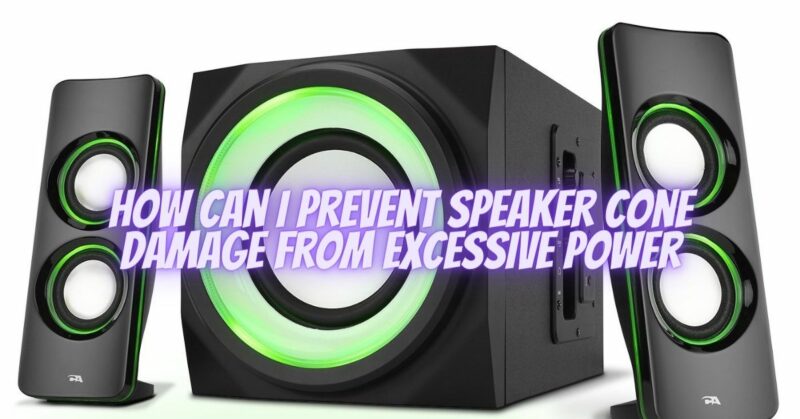When it comes to audio systems, proper power management is essential to ensure the longevity and optimal performance of your speakers. Exposing speakers to excessive power levels can lead to various issues, including damage to the speaker cones. In this article, we will discuss practical tips and techniques to prevent speaker cone damage caused by excessive power, helping you maintain the integrity and longevity of your valuable audio equipment.
- Understand Power Ratings:
Start by understanding the power ratings of your speakers, including their maximum power handling capacity and recommended power range. These specifications are typically provided by the manufacturer and can be found in the speaker’s documentation or specifications sheet. It is crucial to avoid exceeding the recommended power range to prevent potential cone damage.
- Use an Amplifier with Proper Power Match:
Ensure that the amplifier you connect to your speakers is properly matched in terms of power output. Using an amplifier that delivers power within the recommended range of your speakers helps prevent overpowering and potential cone damage. Avoid using an amplifier that exceeds the maximum power handling capacity of your speakers, as this can lead to thermal stress and cone failure.
- Set Volume Levels Conservatively:
Exercise caution when setting volume levels on your audio system. Avoid pushing the volume too high for extended periods, particularly if you notice distortion or strain in the sound. Excessive volume can generate excessive power demands, causing the amplifier to deliver more power than the speakers can handle, potentially damaging the cones.
- Utilize a Limiter or Power Protection Device:
Consider incorporating a limiter or power protection device in your audio system setup. These devices monitor the incoming audio signal and automatically adjust the output to prevent excessive power from reaching the speakers. A limiter can help safeguard your speakers by controlling the signal peaks and preventing power surges that may harm the cone material.
- Monitor Distortion Levels:
Pay attention to any audible distortion or clipping in the sound. Distorted audio indicates that the system is being overdriven, which can strain the speakers and lead to cone damage. If you notice distortion, reduce the volume level to a point where the sound remains clean and undistorted.
- Allow for Proper Cooling:
Proper ventilation and cooling are crucial for preventing excessive heat buildup around the speaker cones. Ensure that your speakers are placed in a well-ventilated area, away from any obstructions that may impede airflow. Adequate cooling helps dissipate heat generated during operation, minimizing the risk of cone damage due to thermal stress.
- Practice Proper Maintenance:
Regularly inspect and clean your speakers to ensure they are free from dust, debris, and any potential obstructions. Accumulated debris can interfere with the movement of the cones, affecting their performance and potentially leading to damage. Gentle cleaning with a soft brush or cloth can help maintain optimal cone functionality.
Conclusion:
Protecting your speaker cones from damage caused by excessive power is crucial for preserving the quality and longevity of your audio system. Understanding power ratings, using a properly matched amplifier, setting volume levels conservatively, and monitoring distortion are important steps to prevent cone damage. Incorporating limiters or power protection devices, ensuring proper cooling, and practicing regular maintenance further contribute to a healthy speaker system. By following these guidelines, you can enjoy your audio system with confidence, knowing that you are safeguarding your valuable speakers and maintaining their performance for years to come.


